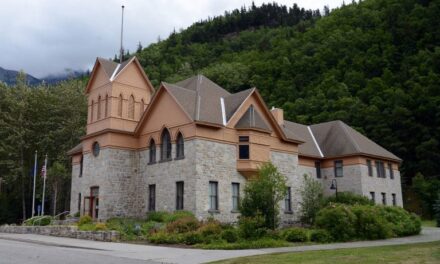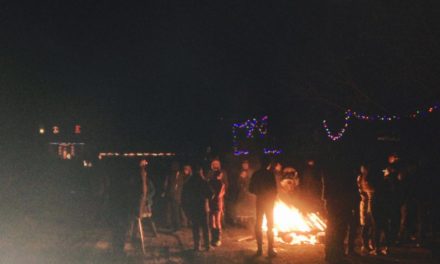This fall the Alaska Department of Fish and Game was able to survey the whole Chilkat valley for moose. In 2019 the department started placing radio collars on cows, and now has 36 animals collared. It is the first time since then that weather has allowed the survey to be completed over the entire valley. Here is Department Wildlife Biologist Karl Koch.
Koch “We always hope to get it done in November of early December because we are trying to get the composition of the herd, and so we want to see how many bulls per hundred cows there are, and how many calves per hundred cows there are, and if the bulls drop thor antlers then we can’t determine which ones are bulls.”
The survey is also easier to conduct when there is some snow and the animals stand out against the white background. In the past the number of animals spotted by researchers was taken as the minimum number for the population.
Comparing the number of moose observed with or without collars to the known number of collared animals has allowed biologists to make the most accurate estimate of the moose population since starting surveys in the sixties.
During the aerial surveys they spotted just over half the collared animals, and observed a total of 191 moose. Almost two thirds were adult females. The population of the Chilkat valley is now estimated to be at 352 animals.
Koch said this comfortably meets the agency’s management objectives.
Koch “We have some management objectives and one is a post hunt population of two hundred moose, so we are really in good shape there. And then you need enough bulls to keep the cows pregnant every year, and recruit calves into the population, we shoot for at least twenty five bulls per hundred cows. I saw thirty four per hundred cows, so that was also a good thing to see as well. And then sixteen calves per hundred cows is a little bit low but it is within that historic range we have for Haines.”
Starting around age two, cows will give birth to one or two calves per year. Depending on conditions, a third to a half of them may survive to their first year. Many will get eaten by predators in the summer, in the winter, deep snowpack impedes their movements.
When snow deepens moose seek the shelter of the forest canopy.
Koch tells of survival challenges at this time of year
Koch “They’ve shifted to winter diet, switched to winter browse which is woody plants, willows and other browse species, that’s a tough time for them, because the bulls will have just been through the rut, so there is still a little bit of hormones going on and a little bit of breeding activity, and that takes a lot out of the bulls, so they have a little bit lower survival than the cows.”
Koch says they are well adapted to survive the winter.
Koch “They stay warm primarily because of body fat and their coat, but mostly body fat. I remember reading in a book many years ago, if it’s warmer than 15 degrees F, it’s actually a little too warm for a moose in the winter. And if it’s warmer than 55 in the summer, it’s actually a little too warm for them , they spend more energy , because they are built for being in a cooler climate.”
Moose stay active throughout the winter. They can be aggressive. It is not recommended to approach, try to feed, drive into or stay anywhere near a moose.








